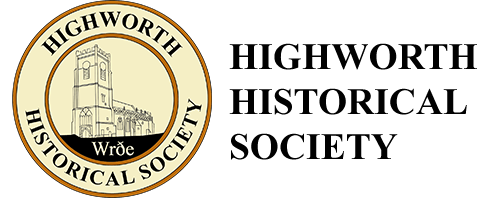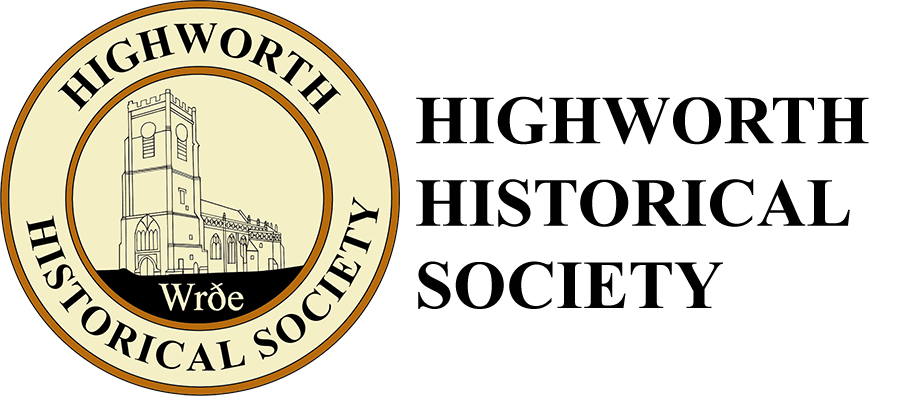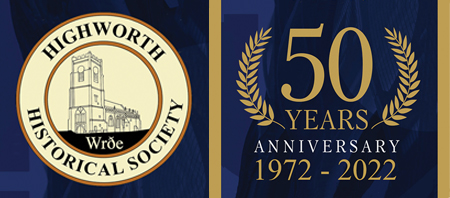Lest We Forget Continued (page 4)
When it was thought that Germany would invade the British Isles, several forms of defence were set up around the town. These included machine gun posts to defend each approach. One was situated in the corner of the wall opposite Westrop House looking towards Hampton Hill. Another was in the south wall of the Fox Inn commanding views of the Swindon and Shrivenham roads. Another was in the wall next to the Plough Inn looking towards Lechlade Hill. It was proposed to place one on the roof of the Jesmond House (Hotel), but that did not proceed. It was thought that if the Germans actually advanced as far as Highworth there would be heavy street fighting in the centre of the town. Some of the attics in the houses in the High Street had only thin partition walls so, early in the war Jack Archer, who had a good knowledge of the buildings, and several Royal Engineer officers surveyed the position and drew up plans for knocking holes from one house to another to facilitate movement.
In the early days most companies of the 9th Battalion had exercises with the 1st Motor Training Battalion of the Kings Royal Rifle Corps who were stationed at Chiseldon Camp. The KRRC were the first to admit that the real strength of the Home Guard was the way in which men knew every inch of their home ground. D Company of the 9th Battalion HG, was the Highworth Company. Their motto was “They shall not pass” and this was an incentive for all ranks to fight tooth and nail to keep it up. A Crusader tank attempted to once during an exercise, but was landed high and dry on the rails of a road-block on an approach to the town.
Early in March 1942 Captain E.J. Hawxwell, of the KRRC, was appointed Adjutant and Training Officer for the Battalion. As far back as July 1941, a Permanent Staff Instructor had been added to Battalion Establishment and Sgt. E.E. Simms, of the Wiltshire Regt., was seconded to the 9th Battalion. Another PSI was added in September 1942, and Sgt. E. Dye, of the KRRC, joined the Battalion and both were given the temporary rank of CSM.
In 1942 weekend courses were held at Highworth, the subjects taught being:- Spigot mortar and Northover, LMG, section leading and Sten Gun. The courses were well attended as were most courses run for the Home Guard, especially the weekend courses held at Bulford. The basis of all the training in the Battalion was to make every man proficient with the weapons he was to use and in fieldcraft. During 1942 a Battalion Camp was held at Hannington Bridge. This was pitched in May, commencing with a weekend camp at Whitsuntide. At this time attendances were not very large, as all preliminary arrangements for D-Day caused all ranks to put in extra time on guards and pickets. Many had to work longer hours, but about 300 spent a weekend or longer under canvas. The week’s camp was held from August 5th to12th. About 40 attended. Whilst in camp, one company had the good fortune to enjoy a first rate lecture on airborne troops and also a trip in a glider.
In July 1944, Major F.W. Jennings and Captain S.A. Bonner, OBE left the district whereupon Sir Noel Arkell took over the Highworth Company. Major Jennings had been nominated Second in Command of the Battalion, his place being taken by Major N.L. Whatley, Officer Commanding Chisledon Company.
The highest strength of the Battalion was 2,340 and upon “Stand Down” the Battalion strength was 96 Officers and 2,028 other ranks. At the time of stand down D Company Highworth was :-
Company Headquarters: Highworth.
Company Commander: Major T. Noel Arkell.
Second in Command: Captain Louis Cotton.
Company Sergeant Major Walter Avery.
Company Quarter Master Sergeant Fred T. Chick.
Platoon Commanders, Lt. Hugh D. Roberts. Sergeant Harry Jefferies. Lt. L. Colin Hicks. Sergeant T. Slack.
Lt. Con C. Morse. Sergeant J.J. Cook. 2/Lt. Ernest F. Fry. Sergeant G.H. Hemmings. Lt. G. Miles M.M. Sergeant Alec Fry.
Due to the scattered area of the Battalion, which covered more than 150 square miles, a central stand-down parade was impossible. Five of the thirteen Companies had their final parades on Sunday 26th November 1944, four more were addressed during the week prior to Sunday 3rd December and the last four on the appointed day. In December 1945 came the last order for final disbandment, which was to take place on 31st December at midnight. Many of those from Highworth who had volunteered back in 1940 had seen action in the First World War and, of course, many of the youngsters of the town had also served in the Home Guard until they were called up to join the armed forces. There is no doubt that Highworth was prepared to do her bit in helping to defend her country.
It was during 1940 that the Auxiliary Units were formed around the coast of Britain. These small units of highly-trained men were to carry out a form of guerrilla warfare behind enemy lines in the event of an invasion by the German forces. It was believed at the time that, if the German forces had managed to get a footing in the Home Counties, one of their many headquarters would have been Coleshill House in (then) Berkshire. The German High Command planned to drop parachutists and Airborne Glider soldiers in the Thames Valley area in the vicinity of Fairford airfield and the surrounding countryside in a similar fashion to that which the British 6th Airborne Division did in Normandy in June 1944. In the event of this there would have been prime targets in this area which would have been ripe for sabotage. For example, supply columns, ammunition dumps, airfields, factories and main-line railway lines being just a few. There would also have been many high-ranking German officers in the area which could have either been captured or killed, helping to lower the moral of the German troops. Although this type of assassination was not a primary objective owing to the fact that it would have exposed them to determined pursuit and condemned the local population to vicious reprisals. This is where the Highworth Cell of the Auxiliary Units would have come into its own. They were formed with this target in mind; to disrupt the enemy in as many ways as possible. In the event of capture the men of the Auxiliary Units would have been given no quarter and would have been immediately tortured, then executed. Many of those who were stationed at Coleshill House, which was the Headquarters of the Auxiliary Units, had no knowledge of such a unit at that time. It was thought that the fewer people who knew about it the better was the chance of survival. It was almost certain that the Gestapo would have interrogated any British prisoners who were captured in the vicinity of Coleshill House, which could have led to disastarous results. All this was a well-kept secret in Highworth at the time, in fact some details have only come to light since the Auxiliary Units Reunion at Coleshill during October 1994. The Auxiliary Units were made up of tough well-trained men and it is certain they would have caused the Germans endless trouble in the event of occupation


